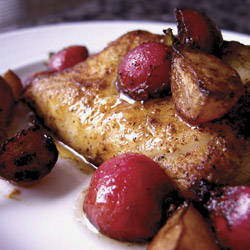Parsley, sage, rosemary and thyme…growing them can save you a dime. While Simon and Garfunkel are probably groaning somewhere, just remember that it’s practical and tasty advice as spring warms the air and the birds start to sing.
While it’s true that growing your own herbs, vegetables and fruits is better on the pocketbook, the G-I-Y, or Grow-It-Yourself, concept is an excellent opportunity to express your artistic side outdoors and your culinary prowess in the kitchen.
“Growing your own herbs and vegetables can provide such a variety to your cooking. There are just so many unique items to choose from. When we try foods from other cultures, we want to bring those tastes home. Gardening can be the best way to enjoy unusual herbs and vegetables,” said Genny Gibbs, horticultural technician for Illinois Central College.
Shiso used in Japanese cooking, Thai basil used in Vietnamese recipes and many specialty mints, like chocolate mint, are just a few herbal ideas that’ll turn your thumb green. Plus, having a green thumb can lead to green elsewhere. It’s estimated that for every 10 cents spent on seeds, a gardener reaps more than a dollar in produce, which can save the average gardening gourmand $12 to $15 a week.
“We noticed a lot more interest in gardening last year. Not just ‘victory gardening’ out of financial necessity, but people wanting to know where there food is coming from,” Gibbs adds.
By now, you’ve probably heard of “locavores,” those omnivores who scour farmers’ markets each weekend in search of what’s fresh from local farms. Let’s face it—nothing’s more local than a batch of herbs planted on your deck or a small plot of tomatoes outside of the kitchen.
“People are looking for more information on herbs the past few years. Plus, there are so many plants that are easy to grow, such as lettuces, greens and even edible flowers. These all provide great texture and color in borders and pots,” recommends Gibbs.
No matter how green your thumb, there are plenty of websites, local classes and gardening groups to provide information, instruction and inspiration. “March and April are great months for early ordering of seeds and plants—but one mistake many new gardeners often make is to overstep and start too early,” Gibbs advises.
Container gardening is an excellent starting point for new gardeners—keeping in mind that plants in containers need more water and regular fertilization. Depending on your space, anything from small pots of cherry tomatoes to full-sized heirloom tomatoes planted in half-barrels can fill your sunny patio. The containers themselves offer an opportunity to add color and design to your space.
“Lots of plants and vegetables are bred to have miniature varieties, such as broccoli, okra, beans, and obviously, tomatoes,” Gibbs said.
For years, master gardeners have recommended following this formula for creating successful container gardens: thrillers—something tall and showy, plus spillers—something that flows over the side and adds dramatic effect, and lastly, fillers—plants that are low and pull the others together. The same formula is an excellent way to approach planting and designing an edible container garden. Plants that grow tall, like basil, can take center stage, partnered with thyme or trailing tomato plants and filled in with parsley, sage or nasturtiums.
“One of our customers told us that her dad always says, ‘If you can’t eat it, you don’t need it.’” said Nancy Vespa, owner of Kelly Seed & Hardware in downtown Peoria.
That’s when a little blending is needed. Blended gardens, those that mix flowers and decorative plants with edible plants, are expected to become one of the hottest gardening trends in the next couple of years. Savvy herb gardeners are mixing low, spreading plants like mints and thymes into rock gardens and paths, while others are planting fruit trees as shady ornamentals. Blending provides opportunities to add color and texture to beds and containers.
“One of the easiest tricks is to plant edible flowers in with your vegetables. Plus, look for unusual plants—things like purple carrots. Kids like different colors and textures, and it adds to the fun of gardening,” suggests Gibbs.
There are many edible flowers to choose from, ranging from sweet to savory. In the spring, try adding pansies, violets or Johnny Jump-Ups to salads or as decorative touches to desserts. In the summer, peppery nasturtiums can make any garden salad extra-special.
Garden centers offer a wide variety of seeds, seedling trays and starter kits well before the last snowfall melts. Later in the spring, you’ll find plants ready to be transplanted. Online gardening companies like cooksgarden.com will take your order anytime and ship plants when they’re ready to be planted in your neck of the woods.
“We had one of our biggest years in vegetable gardening last year, and we’re expecting an even larger year this year,” Vespa added.
Not only does Kelly Seed offer a variety of seed packets for vegetables, herbs and flowers, they also offer bulk seeds for a variety of plants—saving money and offering the best solution to planting large beds.
“Your vegetable and herb garden doesn’t have to be straight, angular and boring. It can be aesthetic and fun, with beautiful, curving paths,” said Gibbs. Each year, the kitchen garden at Illinois Central College is planted in a different pattern to inspire visiting gardeners.
So tap into your inner gardener this spring and enjoy the rewards all summer long! Culinary herbs, fresh salad greens and edible flowers are just a few of the easy-to-grow plants that will inspire you indoors and out. a&s



